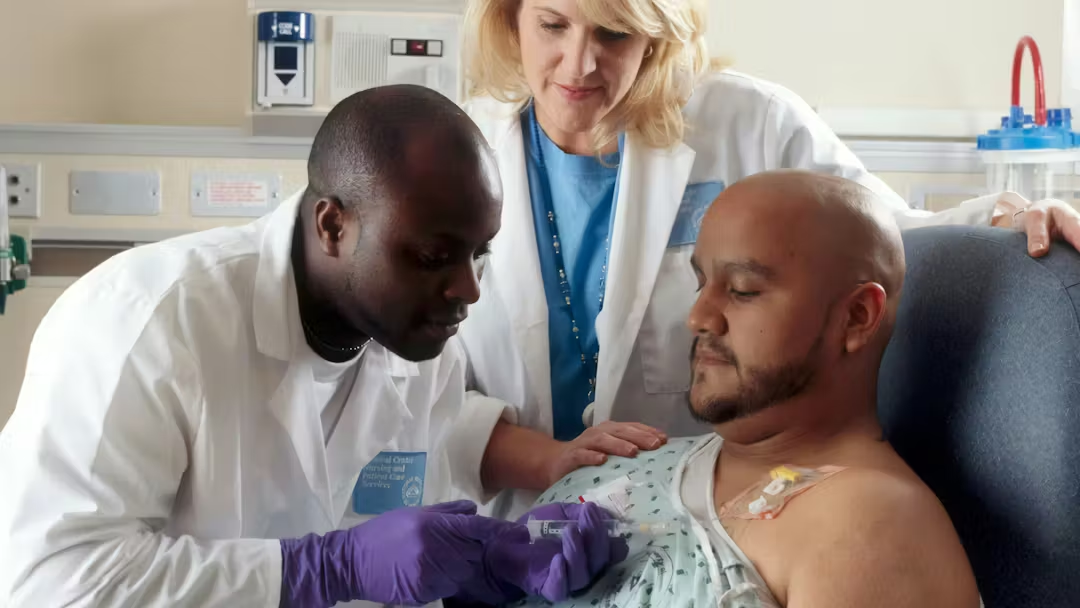Many Americans brush off chronic fatigue or back pain as simple signs of getting older — but in some cases, these symptoms could signal something much more serious: multiple myeloma, a cancer that affects plasma cells in the bone marrow. It’s a disease that often hides in plain sight, progressing quietly until it causes severe complications.
If you or someone you love has been feeling unusually tired, weak, or is suffering from unexplained bone fractures, it’s crucial to understand what multiple myeloma is, how it develops, and how it can be treated.

What Is Multiple Myeloma?
Multiple myeloma is a type of blood cancer that begins in plasma cells — a form of white blood cell found in bone marrow. These cells are responsible for producing antibodies (immunoglobulins) that help fight infections.
When plasma cells become cancerous, they start to multiply uncontrollably, crowding out healthy blood cells and producing abnormal proteins known as M-proteins. These proteins can damage the bones, kidneys, and immune system, leading to serious health complications if left untreated.
According to the American Cancer Society, around 35,000 new cases of multiple myeloma are diagnosed in the U.S. each year, and it’s slightly more common in men and African Americans, typically affecting people over age 60.
Common Symptoms: What to Watch For
Multiple myeloma can be difficult to detect in its early stages, as many symptoms overlap with those of less serious conditions. However, the following signs are often associated with the disease:
- Bone pain, especially in the back, ribs, or hips
- Frequent bone fractures from minor injuries
- Unexplained fatigue or weakness (due to anemia)
- Frequent infections or slow recovery from illness
- Nausea or constipation (from high calcium levels)
- Weight loss and loss of appetite
- Kidney problems (swelling in the legs, foamy urine)
If you experience several of these symptoms, particularly persistent bone pain or exhaustion, it’s important to consult a doctor for evaluation.
How Multiple Myeloma Is Diagnosed
Because the symptoms are often vague, diagnosis typically requires a combination of blood, urine, and imaging tests.
- Blood tests measure levels of M-protein, calcium, and kidney function.
- Urine tests can detect Bence Jones proteins — abnormal proteins linked to myeloma.
- Bone marrow biopsy confirms the presence of myeloma cells.
- Imaging tests (X-rays, MRI, or CT scans) reveal bone damage or lesions.
Early detection plays a critical role in managing the disease effectively, so routine checkups and blood tests are essential for those at higher risk.
Understanding the Causes and Risk Factors
The exact cause of multiple myeloma remains unclear, but researchers have identified several factors that may increase risk:
- Age: Most patients are over 60.
- Gender: Men are slightly more likely to develop the disease.
- Ethnicity: African Americans have almost twice the risk compared to white Americans.
- Family history: Having a close relative with multiple myeloma or another plasma cell disorder.
- Radiation or chemical exposure: Long-term exposure to certain industrial chemicals or pesticides.
- Obesity: Excess body weight may influence immune system regulation and inflammation.
Treatment Options
While there is currently no complete cure for multiple myeloma, modern treatments have significantly improved survival rates and quality of life. Treatment depends on the stage of the disease, overall health, and personal preferences.
- Targeted Therapy:
Drugs such as bortezomib (Velcade), carfilzomib (Kyprolis), and ixazomib (Ninlaro) target specific proteins in cancer cells, blocking their growth and survival. - Immunotherapy:
Treatments like daratumumab (Darzalex) and elotuzumab (Empliciti) help the immune system recognize and attack myeloma cells. - Chemotherapy:
Traditional chemotherapy drugs can destroy rapidly dividing cancer cells but may have more side effects. - Stem Cell Transplant:
High-dose chemotherapy followed by a transplant of healthy stem cells can help rebuild bone marrow and prolong remission. - Radiation Therapy:
Used to relieve bone pain or shrink localized tumors.
Treatment is often a combination of several approaches, and new therapies continue to emerge every year. Many patients live 10 years or longer after diagnosis, thanks to advances in precision medicine.
Nutrition and Lifestyle Support
Although diet alone can’t cure multiple myeloma, healthy nutrition can help strengthen your body and improve treatment outcomes.
Helpful foods:
- Lean proteins (chicken, fish, legumes) to maintain muscle strength.
- Fruits and vegetables high in antioxidants, like blueberries, spinach, and kale.
- Whole grains for steady energy.
- Calcium-rich foods (low-fat dairy, almonds, tofu) to support bone health.
- Plenty of water to protect kidney function.
Foods to limit:
- Processed meats and sugary snacks
- High-sodium foods
- Alcohol and caffeine (in excess)
Lifestyle tips:
- Get light exercise (walking, yoga) to maintain mobility.
- Avoid smoking, which weakens immunity and bone health.
- Manage stress with meditation, counseling, or support groups.
Living with Multiple Myeloma
Being diagnosed with multiple myeloma can feel overwhelming, but understanding your condition and taking an active role in your care can make a tremendous difference. Many patients manage their disease for years with modern treatments, regular monitoring, and healthy habits.
Ask your doctor about clinical trials—new treatments are being tested every year that may offer additional hope. Support networks such as the Multiple Myeloma Research Foundation (MMRF) and the American Cancer Society provide education, emotional support, and community for patients and families.

Conclusion: Early Awareness Can Save Lives
Multiple myeloma may be rare, but it’s not unbeatable. Recognizing early warning signs—such as persistent fatigue, bone pain, or frequent infections—can lead to faster diagnosis and better outcomes.
If something doesn’t feel right, don’t ignore it. Early medical attention, modern treatments, and healthy lifestyle choices can give you the best chance to manage the disease and live a full, active life.



